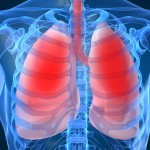A potential link between pollution and autism is being widely reported in the media, with a headline from The Sun claiming there is an ‘Exhaust fume link to autism in infants,’ and The Daily Telegraph reporting that ‘Traffic fumes linked to autism.’
The news is based on a study looking at a possible relationship between the developmental disorder autism and traffic-related air pollution and air quality.
Researchers looked at where mothers lived while they were pregnant and in the first year of their children’s lives. They then estimated the amount of traffic-related air pollution each child had been exposed to.
They found that children with autism were more likely to have lived in areas with the highest levels of traffic-related air pollution during foetal and early childhood development.
The researchers speculate that substances found in traffic-related air pollution may disrupt the development of the brain and nervous system.
However, despite the interesting findings, the study has limitations and its results should be interpreted with caution.
Importantly, this study cannot prove that exposure to traffic-related air pollution while in the womb or in the first year of life directly causes autism, only that there is an association.
Other elements that the researchers did not take into account, such as genetics and environmental factors, may also be at play.
The causes of autism are not well understood and more research into the potential causes is valuable.
Where did the story come from?
The study was carried out by researchers from the Universities of Southern California and California.
It was funded by grants from the US National Institute of Environmental Health Sciences and the Medical Institute of Neurodevelopmental Disorders (MIND) at the University of California, Davis.
It was published in the peer-reviewed medical journal Archives of General Psychiatry.
The study was covered extensively by the media and despite exaggerated headlines, the findings are reported appropriately. Some of the media coverage included comments by experts in the field who were cautious about the study’s findings and questioned how pollution could alter the brain’s development.
For example, BBC News carries a quote from Uta Frith, a professor of cognitive development at University College London: “It seems to me very unlikely that the association is causal… [the study does not] get us any further since it does not present a convincing mechanism by which pollutants could affect the developing brain to result in autism.”
Providing an opportunity for critics of a particular theory to state their criticism is useful. All too often the media report a study in a way that suggests its findings have been universally accepted.
What kind of research was this?
This was a population-based case-control study looking at the association between traffic-related air pollution, air quality and autism.
The researchers recently identified an association between the risk of autism and living within 309 metres of a highway during pregnancy or early childhood in the Childhood Autism Risks from Genetics and Environment (CHARGE) study.
This new piece of research used data from children in the previous study to look specifically at traffic-related air pollution and air quality.
A case-control study is a comparison of people who have a condition of interest (cases) with those who don’t (controls). The past histories and characteristics of the two groups are examined to see how they differ, as factors that differ between the groups may be contributing to the condition. This type of study is often used to give clues to potential risk factors for uncommon medical conditions.
These types of studies collect data after the participants have already experienced the outcome of interest (in this case a confirmed diagnosis of autism). But it can also mean that it may be difficult to reliably estimate past exposure to possible risk factors.
What did the research involve?
The researchers analysed 279 children with autism (cases) and 245 children with typical development (controls) who were part of the Childhood Autism Risks from Genetics and Environment (CHARGE) study in California. The children were all aged 2 to 5 years and the cases were matched to the controls by sex, age and the broad geographic area where they lived.
The children’s parents were interviewed to obtain demographic and medical information, as well as residential histories of where they had lived in the past. The residential data included the addresses and dates the mother and child lived at each location, from three months before the child’s birth (gestation) up to the most recent place of residence.
The researchers then used two methods to estimate the air quality and the children’s exposure to traffic-related air pollution, related to the address of the child at birth and the residential history obtained from parents.
The first method estimated the average concentration of exposure to traffic-related air pollution for the specific locations the children lived at and how long the children had lived there. This was a detailed estimate based on a modelling system taking into account the following factors:
how far people lived from roads
traffic volumes
meteorological factors such as wind speed and direction
information taken from air quality monitors
The second method used data previously collected by the US Environmental Protection Agency so that the researchers could work out levels of pollution for the addresses the children lived at.
The researchers specifically looked at the exposure to ozone, nitrogen dioxide and fine sooty particles in the air called particulate matter, which are known to be produced by motor vehicle exhausts.
Modelling techniques were used to evaluate the relationship between autism and traffic-related air pollution, and examined whether living in an urban or rural area affected the findings.
They also used statistical techniques to adjust for the child’s sex and ethnicity, as well as the maximum level of education of the mother and whether the mother smoked during pregnancy.
What were the basic results?
The children included in the study were 84% male and 50% were non-Hispanic white. Following adjustment, the researchers found that compared to controls, children with autism were more likely to live at residences that had the highest level of exposure to traffic-related air pollution:
while they were in the womb (odds ratio [OR] 1.98, 95% confidence interval [CI] 1.20 to 3.31)
during the first year of life (OR 3.10, 95% CI 1.76 to 5.57)
They also found that:
moderate exposure to traffic-related air pollution (at levels between the top and bottom 25% of exposures) was not associated with an increased risk of autism
compared to controls, children with autism were more likely to live at residences that had the highest level of exposure to nitrogen dioxide and particulate matter
living in an urban area compared to a rural area was not associated with a statistically signifiant increase or decrease in the risk of autism (OR 0.86, 95% CI 0.56 to 1.31)
How did the researchers interpret the results?
The researchers concluded that exposure to traffic-related air pollution, particulate matter and nitrogen dioxide was associated with an increased risk of autism.
They say that the public health implications of these findings are “large” because air pollution exposure is common and may have lasting neurological effects.
The researchers added that further research will help to determine if these associations are causal – if exposure to traffic-related pollution directly contributes to causing autism.
Lead researcher Dr Heather Volk is quoted in the media as saying, “We’ve known for some time that air pollution is bad for lungs and especially for children. We’re now beginning to understand how air pollution may affect the brain.”
Conclusion
Overall this study provides some evidence of an association between traffic-related air pollution and autism.
But, importantly, it does not prove that exposure to traffic-related pollution while in the womb or during the first year of life leads to autism.
There are also other limitations to this study:
Despite the authors’ efforts to adjust for other factors that may have influenced the results (such as whether the mothers smoked during pregnancy or not), it is possible that other unmeasured factors (genetic or environmental) play a role.
It is possible that some parents could not accurately remember and report their residential histories after the child’s birth, which could affect the results. Using data from a census, for example, to verify self-reported answers would have provided more accurate residential information.
The measures of air pollution exposure were based on modelled estimates that used data about where the child lived, and this may not fully reflect actual exposure.
This study was carried out in the state of California, which has high levels of air pollution in certain areas – out of the top 10 cities in the USA rated by particulate matter levels, five of them are in California. This means the results may not be applicable to the UK.
Further research is required to investigate the possible link between traffic-related air pollution and autism. The causes of autism are not well understood and research into the potential causes is valuable.
When investigating the causes of conditions, especially a condition as complex as autism, a lot of evidence from different types of studies is needed before a firm conclusion can be made.



